Head to Head: Google Apps vs Microsoft Office 365
Mary Branscombe compares the enterprise versions of both and her conclusions may surprise you...

Mobile management
With Google Apps for Business, you can manage Android devices (as long as they run Android 2.2 or later). You can set a policy that enforces a password of a particular strength and wipe lost devices and users can remotely locate or lock their phone or make it ring. You have to manage rolling out device security as it requires an app users download from Android Marketplace, but turning on device security stops them using Android Marketplace until the app is installed (there's a direct link to get around the chicken and egg problem here).
There's also a connector to allow you to manage BlackBerry users of Google Apps from a BlackBerry Enterprise Server, and options for applying password and other device policies to smartphones using Google Sync or Exchange ActiveSync, which can end up as a confusing mix of management options.
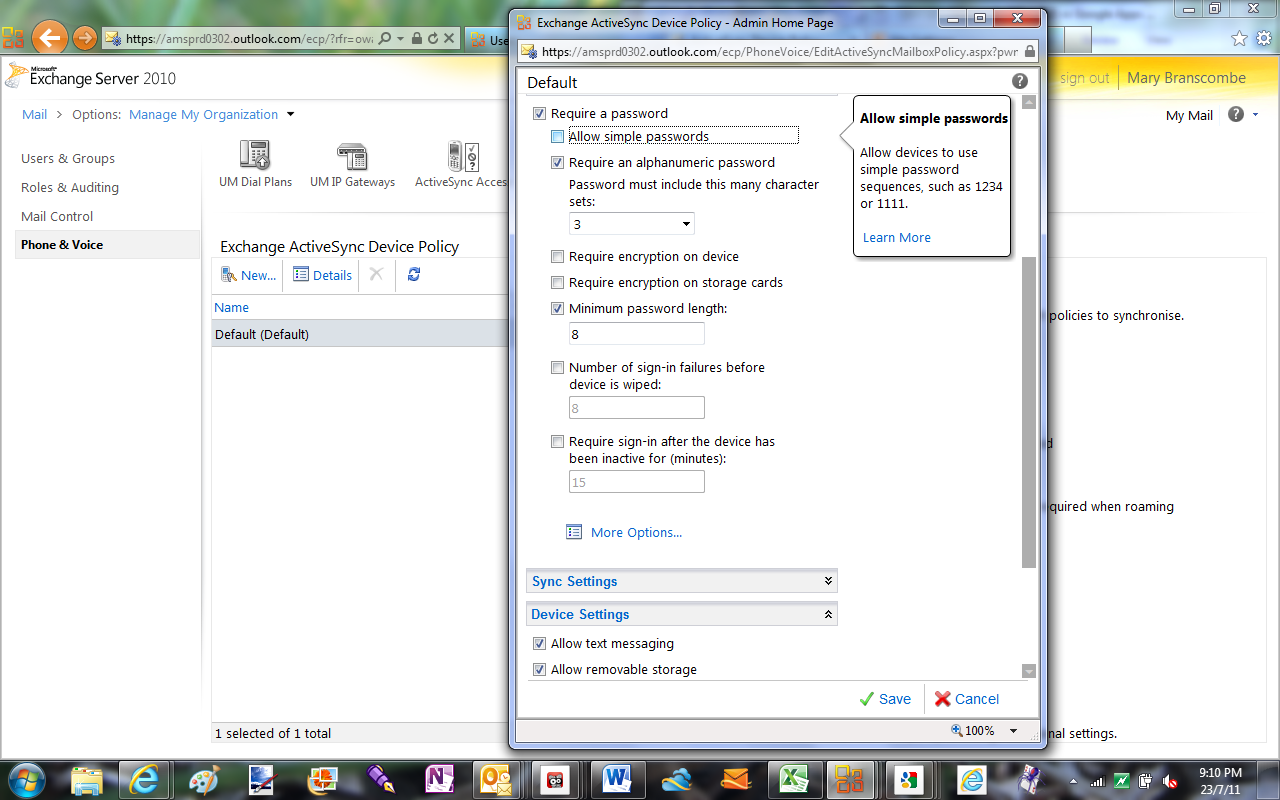
Fine control of smartphone security in an interface that will be familiar to any Exchange administrator.
Office 365 has a more unified and comprehensive approach. Exchange Online gives you the same mobile device management as Exchange Server using ActiveSync Policies which work to some extent on virtually all smartphones including Android, iPhone. BlackBerry and Symbian as well as Windows Mobile and Windows Phone. You can enforce strong passwords and encryption, control individual device features (like Bluetooth), configure sync options like whether attachments can be downloaded on a phone and wipe devices automatically if the password is wrong too many times. You can also block or quarantine specific mobile devices from connecting. Users can even block or wipe their own phones.
Winner: Office 365's unified and comprehensive approach to smartphone management makes it the clear winner here.
Document management
Google Docs has no equivalent to SharePoint Online. Sites is a nice simple tool for creating internal or external Web pages and with Google Docs, you can control whether users can publish or share documents outside the business and whether documents default to being private or public. Otherwise sharing is an ad hoc thing that users control.
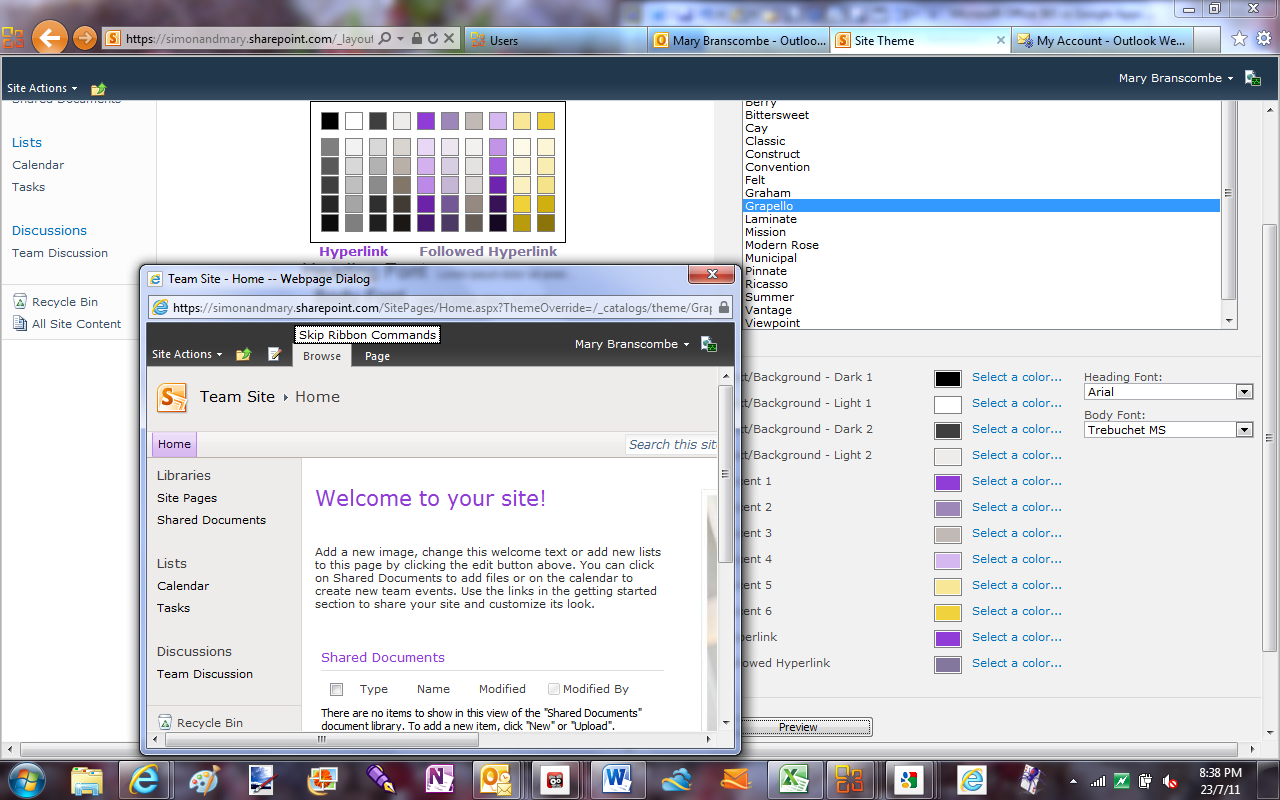
SharePoint Online combines workflow, document management and Web publishing and it looks professional straight away.
SharePoint Online combines Web page authoring for external sites with a full document management tool with libraries, lists, templates, discussion tools, shared calendars, RSS feeds, workflow, check in and check out options and version control plus powerful search options. Your Team Site includes pages for every user where they can blog, share links and documents or access their files on the move. Taking advantage of all the options is more complex but it's also far more powerful.
Winner: Office 365 has much more capable sharing features, but these are correspondingly more complicated to manage. If you need them though, then it's worth bearing with.
Get the ITPro daily newsletter
Sign up today and you will receive a free copy of our Future Focus 2025 report - the leading guidance on AI, cybersecurity and other IT challenges as per 700+ senior executives
Mary is a freelance business technology journalist who has written for the likes of ITPro, CIO, ZDNet, TechRepublic, The New Stack, The Register, and many other online titles, as well as national publications like the Guardian and Financial Times. She has also held editor positions at AOL’s online technology channel, PC Plus, IT Expert, and Program Now. In her career spanning more than three decades, the Oxford University-educated journalist has seen and covered the development of the technology industry through many of its most significant stages.
Mary has experience in almost all areas of technology but specialises in all things Microsoft and has written two books on Windows 8. She also has extensive expertise in consumer hardware and cloud services - mobile phones to mainframes. Aside from reporting on the latest technology news and trends, and developing whitepapers for a range of industry clients, Mary also writes short technology mysteries and publishes them through Amazon.
-
 Asus ZenScreen Fold OLED MQ17QH review
Asus ZenScreen Fold OLED MQ17QH reviewReviews A stunning foldable 17.3in OLED display – but it's too expensive to be anything more than a thrilling tech demo
By Sasha Muller
-
 How the UK MoJ achieved secure networks for prisons and offices with Palo Alto Networks
How the UK MoJ achieved secure networks for prisons and offices with Palo Alto NetworksCase study Adopting zero trust is a necessity when your own users are trying to launch cyber attacks
By Rory Bathgate
-
 Microsoft looks to tempt legacy G Suite users with hefty discount
Microsoft looks to tempt legacy G Suite users with hefty discountNews The move comes after Google's decision to revoke free G Suite accounts created between 2006 and 2012
By Sabina Weston
-
 Google to shut down free G Suite accounts
Google to shut down free G Suite accountsNews Legacy G Suite users have been able to continue using their custom domain accounts for free for ten years
By Sabina Weston
-
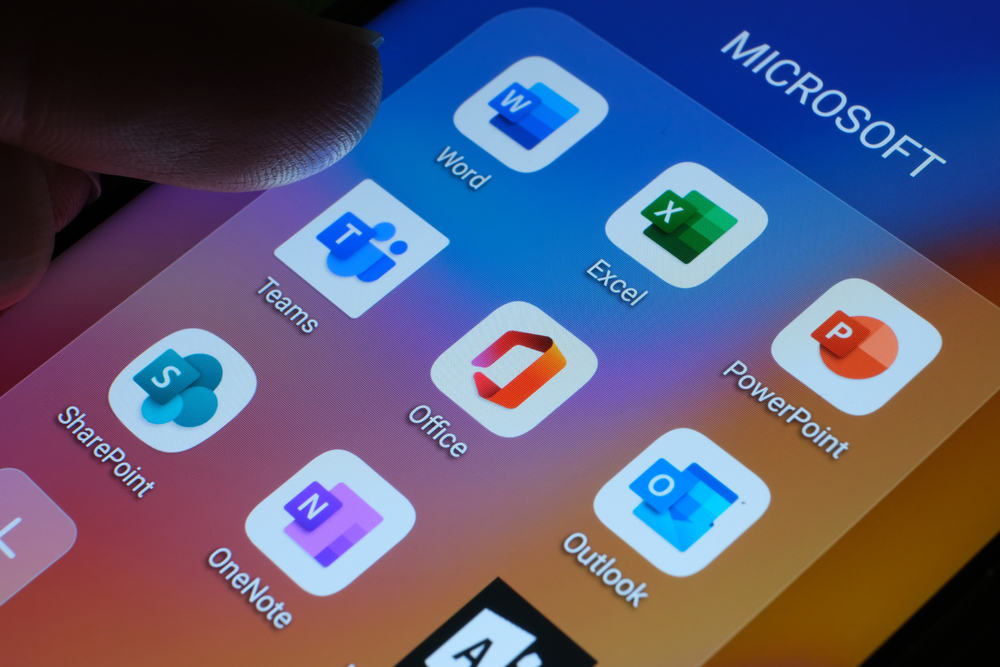 Microsoft to raise prices for Office 365 and Microsoft 365 in March 2022
Microsoft to raise prices for Office 365 and Microsoft 365 in March 2022News This marks the first "substantive" price increases to Office 365 since it was launched a decade ago
By Bobby Hellard
-
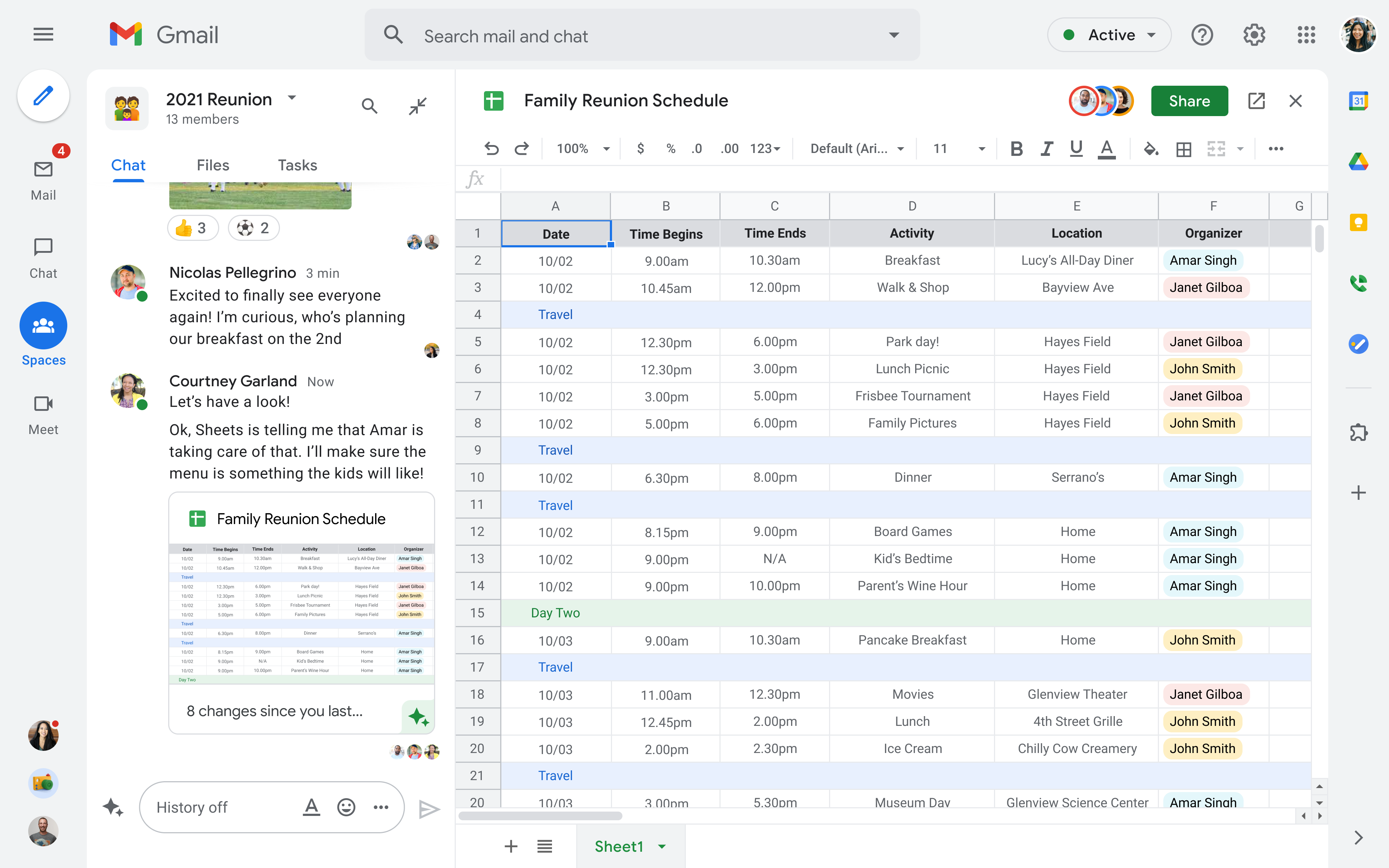 Google Workspace is now available for everyone
Google Workspace is now available for everyoneNews The move means all of the tech giant's three billion users can access the full Google Workspace platform
By Bobby Hellard
-
 Google Photos is free for just one more month
Google Photos is free for just one more monthNews "High-Quality" media and files will count toward a new 15GB free storage cap
By Mike Brassfield
-
 Google owns my soul and I don’t miss it one bit
Google owns my soul and I don’t miss it one bitOpinion The shift to remote working has made me realise that my head is now firmly in the clouds
By Dick Pountain
-
 The definitive guide to backup for G Suite
The definitive guide to backup for G SuiteWhitepapers How to find exactly what you need to keep your data safe
By ITPro
-
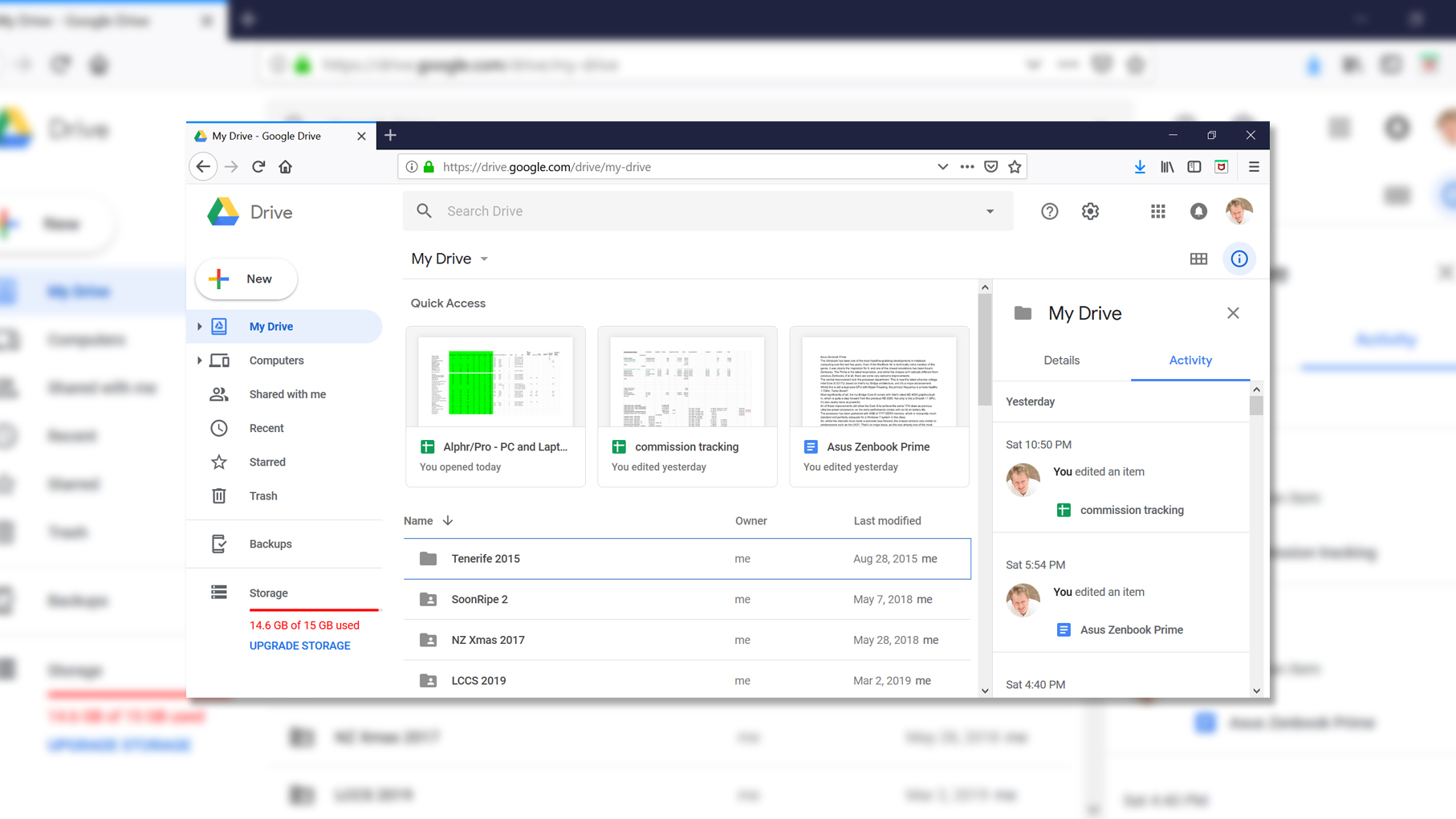
 Google G Suite review: Suite like chocolate
Google G Suite review: Suite like chocolateReviews If you can make the leap to a cloud-centric usage model, G Suite provides seamless real-time document collaboration.
By James Morris